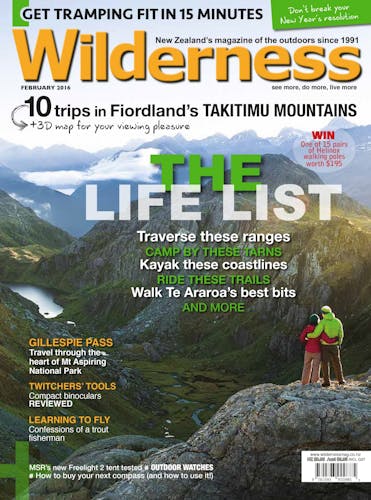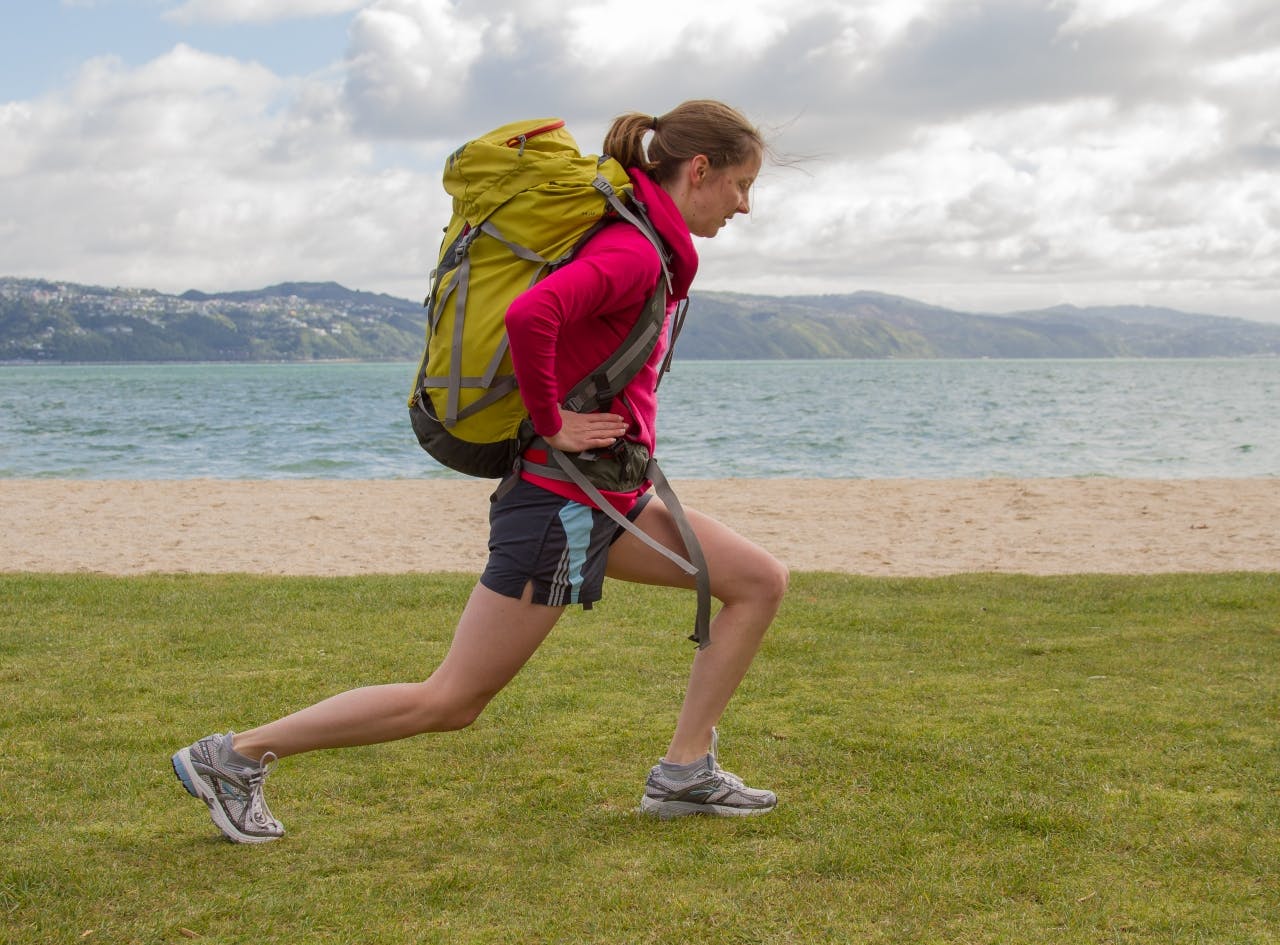Avoid post-tramp aches and pains with our 15 minute workout
It’s hard to find the time to tramp your way to fitness. So what’s the next best option? In just 15 minutes a day there are a number of ways you can work on building strength, stamina and mobility.
Try these seven exercises for starters.
Run up hills
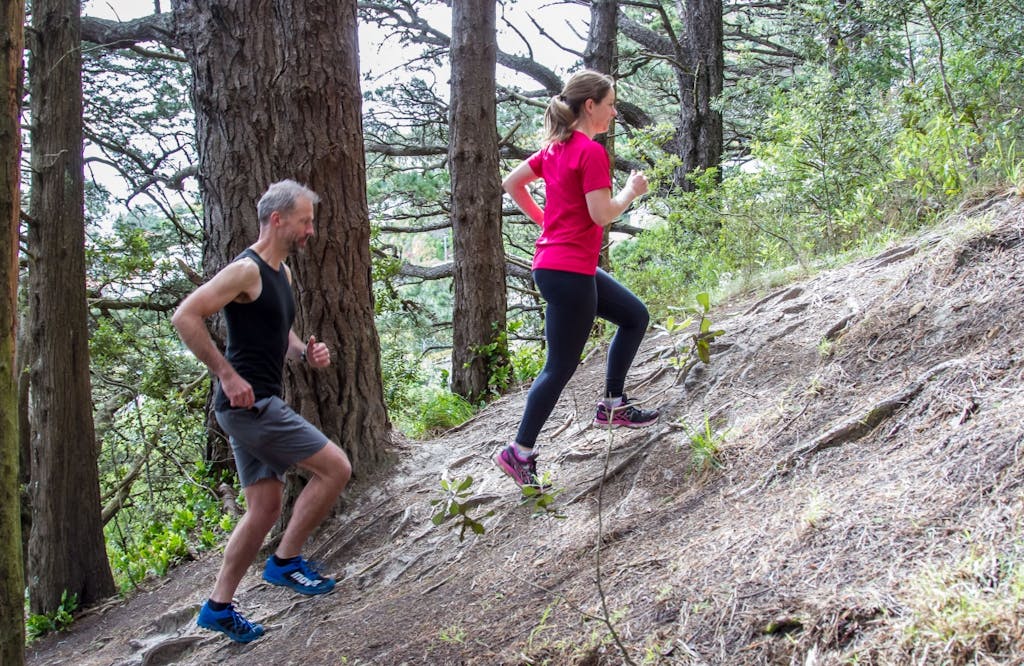
Tramping in New Zealand almost always sends you uphill, so it’s only logical that running uphill will help you prepare for your next tramp.
Running uphill will build strength and stamina in your legs, but it’s also a good way to improve your aerobic capacity – your ability to breathe when you’re physically exerting yourself. Focus on running as fast as you can without having to stop to catch your breath. The longer you spend running the better, but if you can’t find a hill that takes 15 minutes to run up, focus on sprinting up a shorter hill and jogging down with as many laps as you can. Running downhill, particularly off-track, will help improve your balance and ability for steep downhill descents
Run up stairs
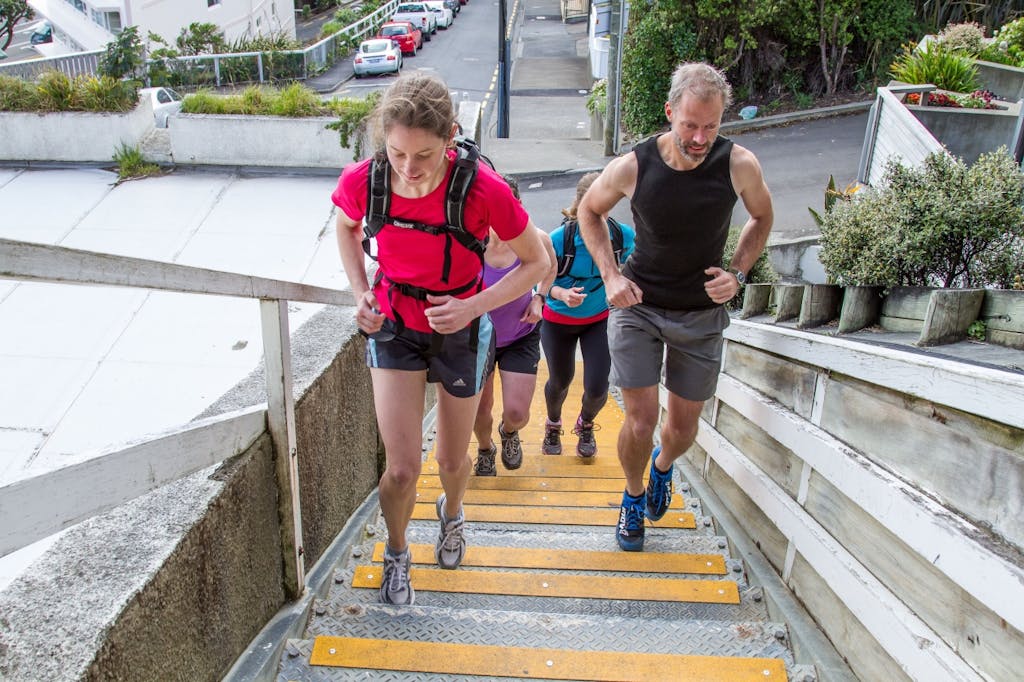
If you can’t find a hill, find a set of stairs – try sports arenas or office buildings. The latter has the added benefit that you can just take a 15-minute break from work, sprinting up those stairs. Focus on running as fast as you can without running out of breath or having to stop.
Consider varying your routine on the stairs: taking every single step requires more focus, whereas taking two steps at time requires more strength and will increase your heart rate and breathing. In the last 2-3 minutes of the workout, when your heart rate is up and you’re feeling fatigued, jump with both feet up two or three steps at a time without stopping.
Lunges and squats with extra weight
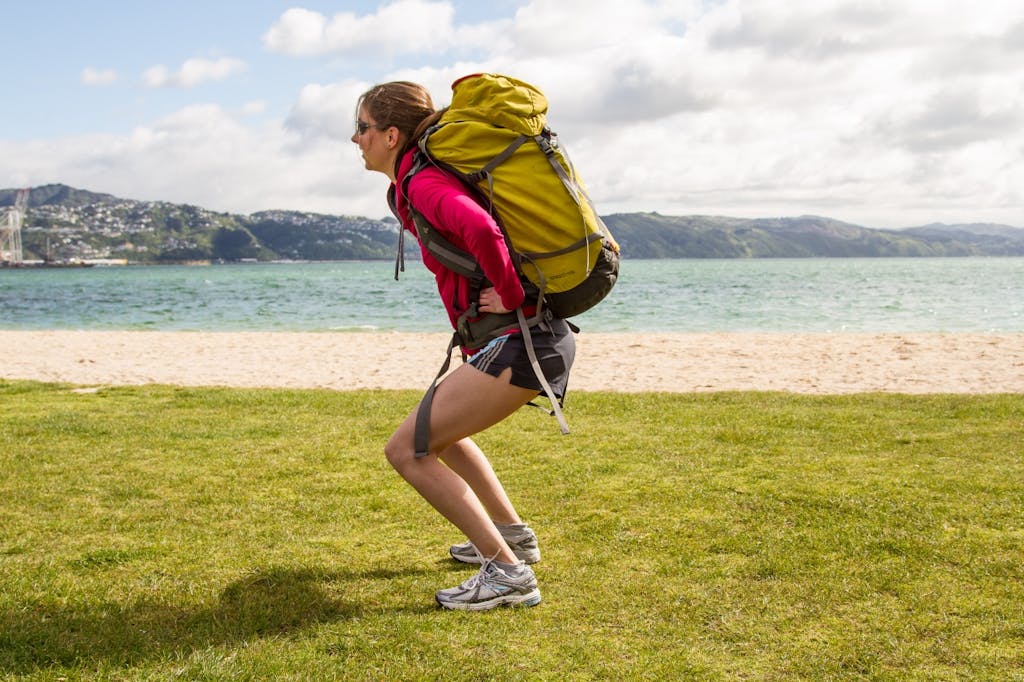
If you’ve found yourself at the bottom or the top of a steep climb, you’ll know that wobbly feeling in your legs when your thighs and calves have worked tirelessly to keep you moving. Lunges and squats are a great way to build strength in these essential muscles.
To maximise your 15 minutes, add weight to make the exercises hard even when you move slower. You can use handheld weights or fill your pack with tramping gear or water.
For these exercises, it’s important to go slow and pay attention to your ankles and knees. Make sure your feet and knees face straight ahead. With squats (middle photo), sit your hips back as if you’re sitting on a chair. For lunges (bottom photo), work on trying to keep your front knee over the top or even behind your ankle. In both cases, going lower will increase the challenge, but only go as low as your flexibility allows without pain.
Practise these in sets. Start with one minute of lunges and squats followed by one minute of rest and gradually increase the time to four minutes with one minute rest.
Run barefoot on the beach
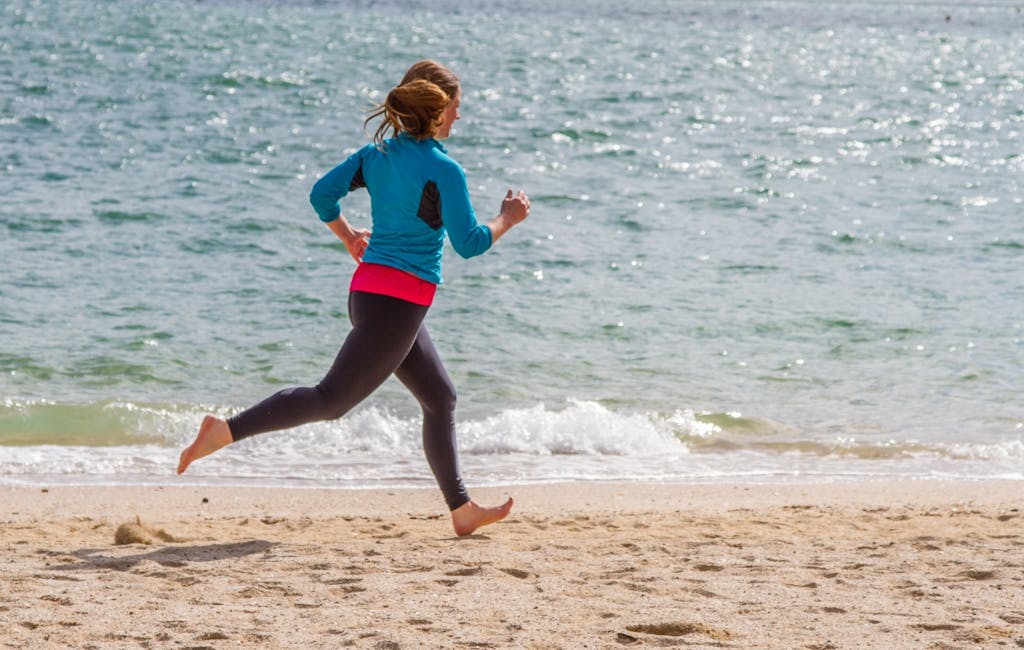
Running barefoot requires the finer foot muscles to help you move and keep you balanced, making it a good way to improve the strength in your ankles and feet. Running barefoot on the beach is both physically harder, because the sand gives way as you move, and creates a softer landing for your feet and knees, so you’re less likely to get injured. If you’re new to running barefoot, take time to build strength and adjust to running without shoes. Try taking laps on the beach before running for a full 15 minutes.
Balance on one leg with your eyes closed
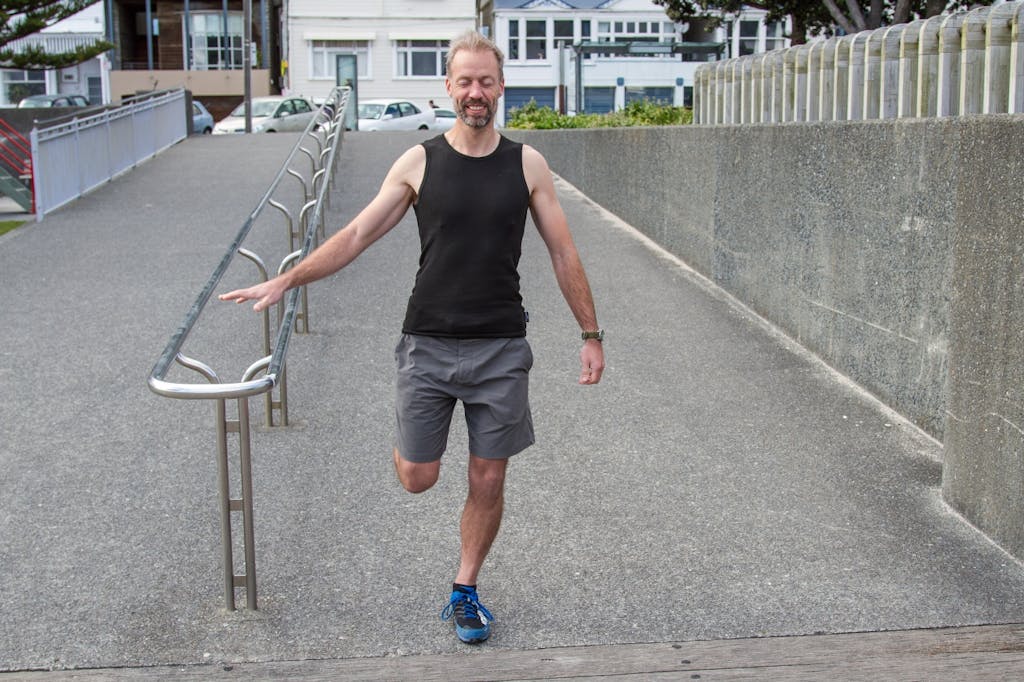
Balancing on one leg can achieve the same benefits as running on the beach with the added advantage of improving your balance for those tricky river crossings and uneven terrain.
Initially, work on balancing for at least 30 seconds, increasing to 2-3 minutes. To make it harder, try closing your eyes. Stand near a wall, with your eyes closed for the full 2-3 minutes without putting your foot down. Repeat a couple of times on each leg.
When you’re done, roll your ankles in a few circles and do a few squats to help release your muscles.
Improve your core strength
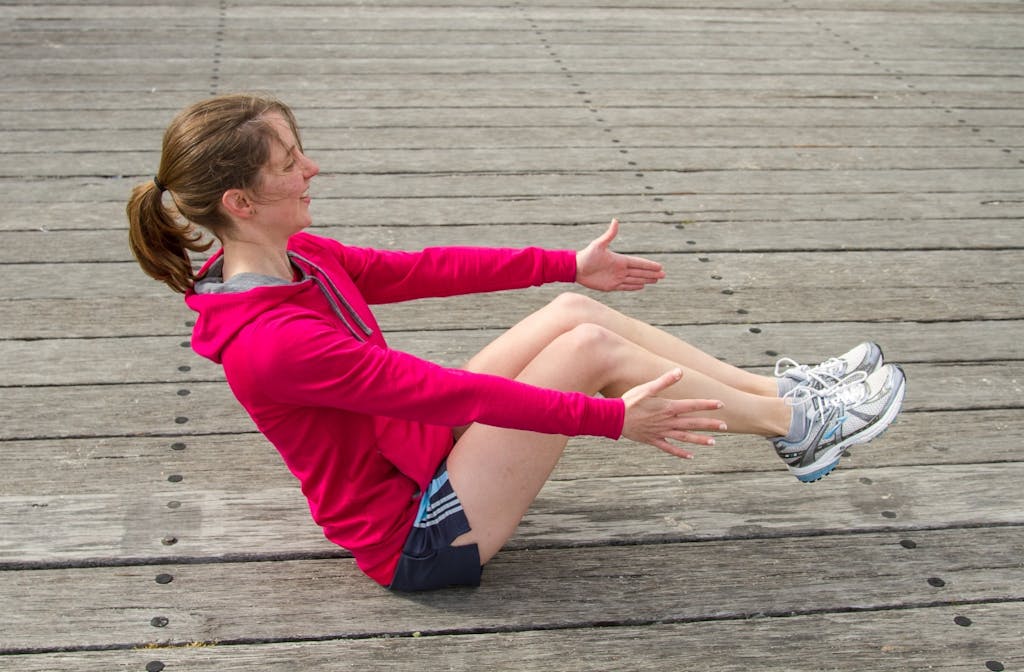
Trampers need strong legs, but core strength is just as important. The core is a collection of muscles around your entire mid-body, and even your pelvis, that help stabilise your spine and back. Having a strong core is essential to balance, keeping your hips and back pain free, coping with a heavy pack and managing difficult terrain like bush bashing and uneven technical ground.
This exercise is simple and offers a number of variations. Sit on the floor, bend your knees and lift your feet – keep your back straight. Hold this for at least 30 seconds and increase the time up to two minutes. Other variations include straightening your legs, moving both hands back and forth either side of your knees and tapping one foot at a time on the ground.
Practise these in sets and consider combining with one of the other exercises.
Stretch and recover
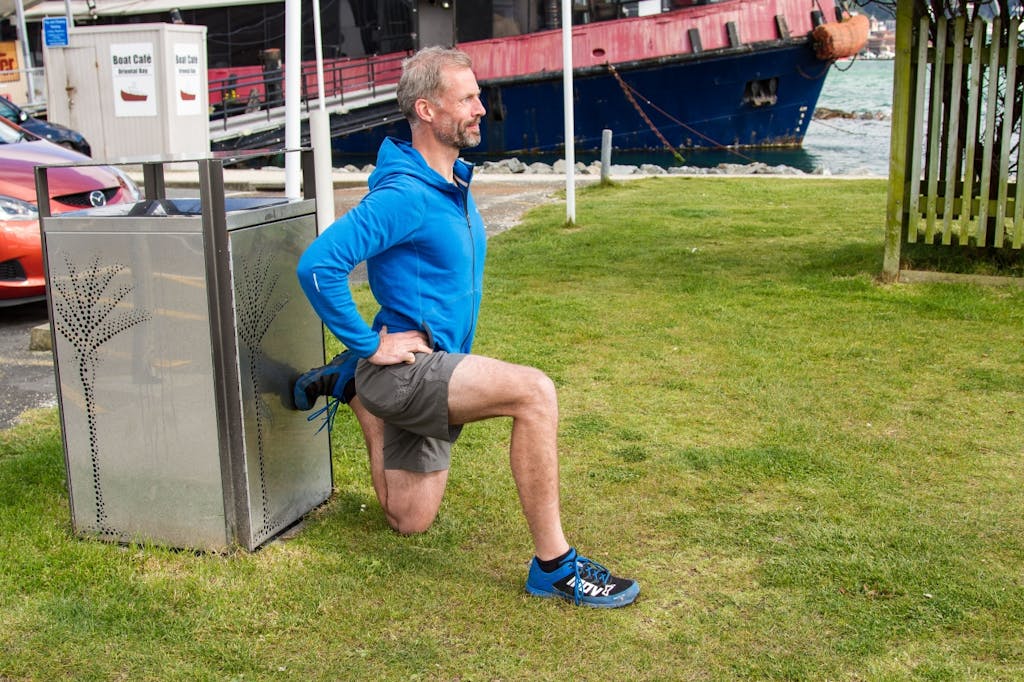
Taking time to recover is essential to maintaining your mobility and preventing sore muscles and pain. These two stretches target major muscles trampers often find tight and sore after tramping or training.
To stretch your thighs or quads, do a lunge with your back foot on a vertical surface. Make sure your back toes are tucked on to the wall and your front knee is over the top or behind the front ankle. You can move back towards the wall to deepen the stretch in your back thigh.
To stretch your hips, hamstrings, buttocks, calves and lower back, lay down on the ground. Take a strap around the sole of your foot and use both hands to pull the foot towards you. Variations of this stretch include moving the foot in the strap to either side of the body while keeping your hips on the ground.
Mix and match
Some of these exercises can be combined into the same 15 minutes – lunges with stretching, or core strength with balance. Varying your workout keeps it interesting and helps prevent injuries by avoiding excessive repetition.





